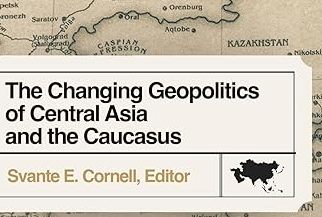Wednesday, 07 February 2007
KONDOPOGA, \"RUSSIAN MARCH\" AND AFTER: THE RUSSIAN AUTHORITIES\' RESPONSE TO THE RISE OF RUSSIAN NATIONALISM
By Dmitry Shlapentokh (2/7/2007 issue of the CACI Analyst)
BACKGROUND: The surprise and uneasiness with which the authorities faced the riots and demonstrations during 2006 can be understood by taking into consideration that nothing in Russian society had provided a clue for the events to come. Indeed, while there were signs of Russian nationalism spreading among the masses of ethnic Russians, for whom it had become a form of social animus, there was no sign of protests that could be violent and comparatively well organized. All these signs of tranquility, and a general deep despise of the Russian masses, induced the authorities to ignore the signs of potential problems.
Wednesday, 07 February 2007
PRESERVING THE STATUS QUO: KADYROV\'S STAKE IN “OPERATION SUCCESSORâ€
By Kevin Daniel Leahy (2/7/2007 issue of the CACI Analyst)
BACKGROUND: Over six years since its inception, the impact of Russia’s ongoing campaign in Chechnya on the Russian polity has been minimal. The conflict has found little resonance across Russian society at large, which, according to polls, tends to regard the conflagration as a vague, undefined irritant, altogether far removed from ordinary life. The Putin administration has proved remarkably adept at insulating Russian society from the tumultuous situation in the North Caucasus, and has successfully forged a broad political consensus on how the “Chechen problem†should be addressed.
Wednesday, 07 February 2007
REBUILDING KAZAKHSTAN\'S AGRICULTURE
By Richard Promfret (2/7/2007 issue of the CACI Analyst)
BACKGROUND: At the time of independence, agriculture was a pillar of Kazakhstan’s economy, and in 1991 employed over a quarter of the workforce. Kazakhstan had been a pastoral economy, although in the 1930s forced collectivization created a sedentary livestock sector. In the 1950s and 1960s the Virgin Lands program brought 25 million hectares (ie.
Wednesday, 24 January 2007
CONSOLIDATION OF POLITICAL PARTIES IN KAZAKHSTAN STRENGTHENS PRESIDENT\'S HAND
By Ryan Kennedy (1/24/2007 issue of the CACI Analyst)
BACKGROUND: One year after President Nursultan Nazarbayev established his dominance over the Kazakhstani political system by winning 91 percent of the presidential vote, his Otan (Fatherland) party, re-enforced its position in Kazakhstan’s parliament, the Majilis. On December 22, the pro-presidential Civic Party, with its 160,000 registered members, and the Agrarian Party, with its 102,000 members, voted to join the President\'s Otan party. This past summer, the Asar Party, led by the President\'s daughter, Dariga Nazarbayeva, made a similar decision to incorporate into Otan.


 Silk Road Paper S. Frederick Starr,
Silk Road Paper S. Frederick Starr,  Book Svante E. Cornell, ed., "
Book Svante E. Cornell, ed., "